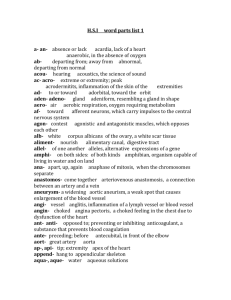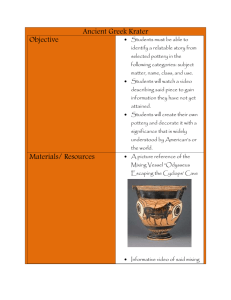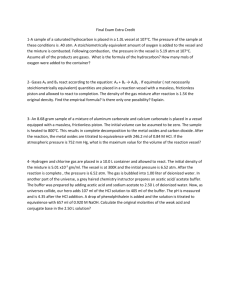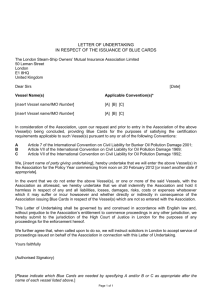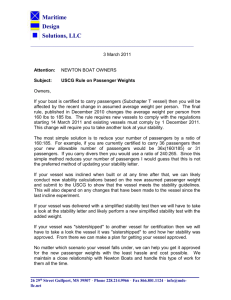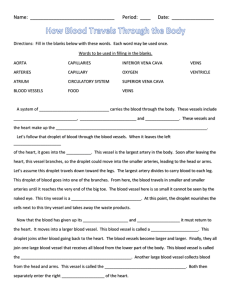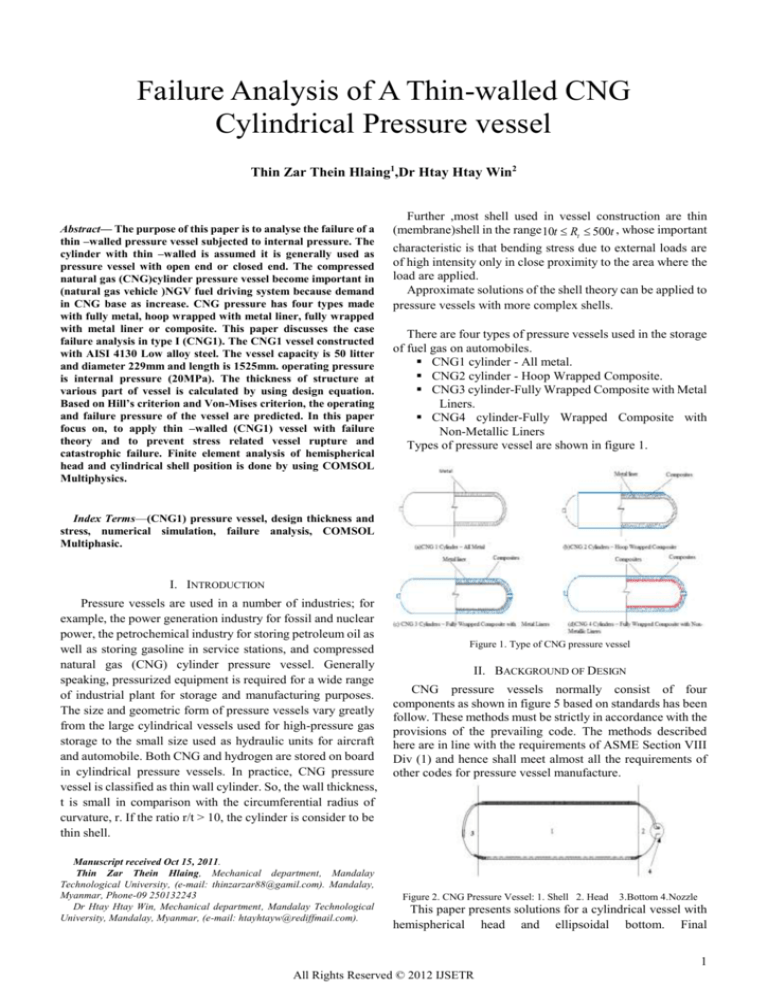
Failure Analysis of A Thin-walled CNG
Cylindrical Pressure vessel
Thin Zar Thein Hlaing1,Dr Htay Htay Win2
Abstract— The purpose of this paper is to analyse the failure of a
thin –walled pressure vessel subjected to internal pressure. The
cylinder with thin –walled is assumed it is generally used as
pressure vessel with open end or closed end. The compressed
natural gas (CNG)cylinder pressure vessel become important in
(natural gas vehicle )NGV fuel driving system because demand
in CNG base as increase. CNG pressure has four types made
with fully metal, hoop wrapped with metal liner, fully wrapped
with metal liner or composite. This paper discusses the case
failure analysis in type I (CNG1). The CNG1 vessel constructed
with AISI 4130 Low alloy steel. The vessel capacity is 50 litter
and diameter 229mm and length is 1525mm. operating pressure
is internal pressure (20MPa). The thickness of structure at
various part of vessel is calculated by using design equation.
Based on Hill’s criterion and Von-Mises criterion, the operating
and failure pressure of the vessel are predicted. In this paper
focus on, to apply thin –walled (CNG1) vessel with failure
theory and to prevent stress related vessel rupture and
catastrophic failure. Finite element analysis of hemispherical
head and cylindrical shell position is done by using COMSOL
Multiphysics.
Further ,most shell used in vessel construction are thin
(membrane)shell in the range 10t Rt 500t , whose important
characteristic is that bending stress due to external loads are
of high intensity only in close proximity to the area where the
load are applied.
Approximate solutions of the shell theory can be applied to
pressure vessels with more complex shells.
There are four types of pressure vessels used in the storage
of fuel gas on automobiles.
CNG1 cylinder - All metal.
CNG2 cylinder - Hoop Wrapped Composite.
CNG3 cylinder-Fully Wrapped Composite with Metal
Liners.
CNG4 cylinder-Fully Wrapped Composite with
Non-Metallic Liners
Types of pressure vessel are shown in figure 1.
Index Terms—(CNG1) pressure vessel, design thickness and
stress, numerical simulation, failure analysis, COMSOL
Multiphasic.
I. INTRODUCTION
Pressure vessels are used in a number of industries; for
example, the power generation industry for fossil and nuclear
power, the petrochemical industry for storing petroleum oil as
well as storing gasoline in service stations, and compressed
natural gas (CNG) cylinder pressure vessel. Generally
speaking, pressurized equipment is required for a wide range
of industrial plant for storage and manufacturing purposes.
The size and geometric form of pressure vessels vary greatly
from the large cylindrical vessels used for high-pressure gas
storage to the small size used as hydraulic units for aircraft
and automobile. Both CNG and hydrogen are stored on board
in cylindrical pressure vessels. In practice, CNG pressure
vessel is classified as thin wall cylinder. So, the wall thickness,
t is small in comparison with the circumferential radius of
curvature, r. If the ratio r/t > 10, the cylinder is consider to be
thin shell.
Manuscript received Oct 15, 2011.
Thin Zar Thein Hlaing, Mechanical department, Mandalay
Technological University, (e-mail: thinzarzar88@gamil.com). Mandalay,
Myanmar, Phone-09 250132243
Dr Htay Htay Win, Mechanical department, Mandalay Technological
University, Mandalay, Myanmar, (e-mail: htayhtayw@rediffmail.com).
Figure 1. Type of CNG pressure vessel
II. BACKGROUND OF DESIGN
CNG pressure vessels normally consist of four
components as shown in figure 5 based on standards has been
follow. These methods must be strictly in accordance with the
provisions of the prevailing code. The methods described
here are in line with the requirements of ASME Section VIII
Div (1) and hence shall meet almost all the requirements of
other codes for pressure vessel manufacture.
Figure 2. CNG Pressure Vessel: 1. Shell 2. Head
3.Bottom 4.Nozzle
This paper presents solutions for a cylindrical vessel with
hemispherical head and ellipsoidal bottom. Final
1
All Rights Reserved © 2012 IJSETR
International Journal of Science, Engineering and Technology Research (IJSETR)
Volume 1, Issue 1, July 2012
mathematical expressions for calculating design thickness for
each part. By using those expressions, and by connecting
membrane stress theory, a method for determining strength of
pressure vessels with hemispherical heads and ellipsoidal
bottom, which is suitable for designing, was developed. A
special computer programmer was created for the application
of this method. Computer calculation was done on a selected
numerical example, and the analysis results were shown in a
diagram.
2.1. Specification Data of CNG1 Pressure Vessel
TABLE I
DESIGN PARAMETER OF CNG1 PRESSURE VESSEL
Design
parameter
1 Vessel
dimension
2 Load
4 Material
Low alloy
steel(AISI
4130)
symbol
Outside
diameter
length
Internal
pressure
D0
Elastic
modulus
Poisson’s
ratio
Yield
strength
Mass
density
value
Unit
229
L
III. MEMBRANE STRESS ANALYSIS OF PRESSURE VESSEL
Stresses in the walls of pressure vessels occur due to
different types of loads, depending on the purpose of the
vessel and on different influences that a vessel is subjected to
during exploitation. Internal pressure has the biggest
influence on the amount of stress, so all other types of loads
are considered to be less important
Solutions of the shell theory equation show that internal
pressure which occurs in the walls of the vessel can be, under
certain conditions, determined by principal stress theory,
Von-Mises theory and stress intensity (Trsca’s theory).
(1) First principal stress theory
For cylindrical shell
P ( R 0.6t )
1 i i
t
For hemispherical head
1
mm
Pi
1525
20
mm
MPa
E
205000
N/mm2
ν
0.285
y
460
MPa
ρ
7850
Kg/m2
(1)
Pi ( Ri 0.2t )
2t
(2)
For ellipsoidal bottom
P ( DK 0.2t )
1 i
2t
(2)Second principal stress theory
For cylindrical shell
P ( R 0.6t )
2 i i
t
(3)Third principal stress theory
(3)
(4)
3 Pi
(5)
(4)Von-Mises stress theory
Y 1 1 2 2
2
2
2
(6)
(5)Stress intensity theory
2.2. Design Formula of CNG Pressure Vessel parts
TABLE II
RESUME OF PRESSURE VESSEL FORMULA-ASME SECTION I & ASME
SECTION VIII
Y 1 3
(7)
(6)First principal strain
1 1 / E(1 2 )
(8)
(7)Second principal strain
1 / E ( 2 1 )
(9)
2
Item
Cylindrical
shell
Thickness
t(mm)
t
Pi Ri
( y 0.6 Pi )
Pressure,
P(MPa)
Pi
yt
( Ri 0.6t )
Stress,σ
(MPa)
Pi ( Ri 0.6t )
t
(8)Third principal strain
3 / E ( 1 2 )
(10)
(9)Equivalent strain theory
2
3
[ ( 12 2 2 3 2 )]1 / 2
(11)
IV. CALCULATION RESULTS OF CNG1 PRESSURE VESSEL
Hemispherical
head
Ellipsoidal head
Pi Ri
t
(2 y 0.4 Pi )
Pi
Pi Ri
(2 y 0.2 Pi )
P
t
t
Pi DK
(2 y 0.2Pi )
P
2 y t
( Ri 0.4t )
2 y t
( Ri 0.2t )
2 y t
( KD 0.2t )
P ( R 0.4t )
i i
t
TABLE III
RESULT TABLE OF THICKNESS FOR PRESSURE VESSEL PARTS
parts
Pi ( Ri 0.2t )
2t
Pi ( DK 0.2t )
2t
Thickness (mm)
Cylindrical shell
5.8
Hemispherical head
8.7
Ellipsoidal bottom
11.4
Nozzle
4
2
All Rights Reserved © 2012 IJSETR
TABLE.IV
RESULT TABLE OF STRESSES FOR PRESSURE VESSEL PARTS
Shell
388.2
Head
124.1
Bottom
109.4
Nozzle
50
2nd principal
stress, 2 (MPa)
184.1
124.1
109.4
15
Von-Mises
stress, Y(MPa)
336.3
124.1
109.4
44.4
Stress
intensity(MPa)
338.2
124.1
109.4
50
1st principal
strain, 1
0.0016
0.00043
0.0003
0.00022
2nd principal
strain, 2
0.0003
0.00043
0.0003
0.00003
3rd principal
strain, 3
-0.008
-0.0003
-0.0003
-0.00009
Equivalent strain
0.0015
0.00057
0.0005
0.00019
1st principal
stress, 1 (MPa)
Figure 4. Von-Mises stress distribution of pressure vessel
VI. RESULTS AND DISCUSSIONS
V. NUMERICAL ANALYSIS OF PRESSURE VESSEL
To analysis the Von-Mises stress, COMSOL software
has been used. The pressure vessel for the analysis is used
natural gas with internal pressure 20MPa. The material is low
alloy steel AISI 4130. Figure 3 show stresses distributed in
CNG1 pressure vessel with internal pressure 20MPa.
The failure pressure of shell portion is predicted by using
finite element analysis software. The failure of the structure
starts from the pressure of 24 MPa and the complete failure of
the structure occur at 28MPa. The operating pressure of the
structure should not exceed 20MPa. These results are shown
in table 5and figure5, and 6.
TABLE V
. OPERATING AND FAILURE PRESSURE OF THIN-WALLED VESSEL
STRUCTURE
Cylindrical
pressure vessel
Operating pressure
Failure pressure
20MPa
Failure starts from
24MPa, complete
occurs at 28 MPa
An approximative analytical solution can be obtained for
the cylindrical pressure vessel with COMSOL Multiphysics.
Following Hill”s criterion, the yielding eill occur for
P 2[F (
Figure 3. Von-Mises stress distribution of pressure vessel
To analysis the Von-Mises stress, COMSOL software has
been used. The pressure vessel for the analysis is used natural
gas with internal pressure 24MPa. The material is low alloy
steel AISI 4130. Figure 4 show stresses distributed in CNG1
pressure vessel with internal pressure 24MPa
R0
R
R
R
1) 2 G (1 0 ) 2 H ( 0 0 ) 2 ] 1
T0
2T0
2T0 T0
Using the model constants, F G 2.47 10 181/ Pa 2 and
H 4.42 10 181 / Pa 2 the analytical onset of yielding occurs
for p=24.2MPa as compared to P=24 MPa which is the result
calculated by COMSOL. Figure11 shows the Von-Mises
stress contours at the onset of yielding. For low alloy steel
with yield stress at 460 MPa , the yield stress is reached for
P=28 MPa.
3
All Rights Reserved © 2012 IJSETR
International Journal of Science, Engineering and Technology Research (IJSETR)
Volume 1, Issue 1, July 2012
Figure 8.Surface: Effective plastic strain .Gauss –point evaluation
(Pressure 28MPa)
Figure 5. Von-Mises stress distribution of pressure vessel (pressure 28MPa)
Surface Von-Mises stress (Gauss –point evaluation) and
Surface: Effective plastic strains (Gauss –point evaluation)
are shown in figure 7nd 8.Mesh shapes are shown in figure 9
and 10.
Figure 6. Volume having reached yield stress at various pressures
Figure 9.Mesh shape for vessel head
Figure 7.Surface Von-Mises stress .Gauss –point evaluation
(Pressure 28MPa)
Figure 10.Mesh shape for vessel shell
4
All Rights Reserved © 2012 IJSETR
VII. CONCLUSION AND RECOMMENDATIONS
From this simple analysis, it can be concluded that this
vessel can failure at the internal pressure at 28MPa. Failure
occurs when the maximum stress in the part exceeds the yield
strength. In this paper the maximum stress exceeds the yield
strength at internal pressure 24MPa. It can be seen in figure 6.
Therefore failure of the structure starts from the pressure of
24 MPa and the complete failure of the structure occur at
28MPa.
In this paper discussed failure analysis for CNG1 pressure
vessel with COMSOL Multiphysics. These results are
approximated to design limits.
Nowadays, CNG1 to CNG4 is used in many automobiles
in many countries. Various scenarios of development and
manufacture CNG pressure vessels have been discussed and it
seems all the CNG pressure vessels (CNG-1 to CNG-4) had
their own advantages and disadvantages. The cost of
manufactured and material will increased from type-1 to
type-4. New solution, manufacturing process or material
should be used to reduce the cost but must follow the
international standard characteristics. Not only the cost but
reliability and life span of tank also must be considered to
developed economical and reliable tanks.
In the future works, the simulation works to estimate the
failure analysis of various type CNG pressure vessels by using
COMOL Multiphysics or ANSYS software.
t
Ri
Pi
y
1
2
3
1
2
3
E
NOMENCLATURE
= thickness (mm)
= internal radius (mm)
= internal pressure (MPa)
= yield strength (MPa)
Mandalay Technological University, for her supervision,
support, guidance and encouragement throughout this
study.
REFERENCES
[1]
[2]
[3]
[4]
[5]
[6]
[7]
[8]
[9]
[10]
[11]
Nice Academy, “NGV Technical Training – NGV Cylinders”,
Malaysia, 2006.
S.T. Peters, “Composites Materials and Processes”, Digital
Engineering Library By McGrawHill, Mountain View, California,
US,2004
B. Sachindranarayan, “Standard HandBook of Machine
Design-Pressure Cylinders”, Digital Engineering Library By
McGrawHill, Texas, US, 2004
R. C. Hibbeler, “Mechanics of Materials”, published by Prentice.
ISO 11439:2000: Gas cylinders — High pressure cylinders for the
on-board storage of natural gas as a fuel for automotive vehicles.
First Edition, 2000.
ASME Section VIII Div (1) 1998 ed: “Rules For Construction of
Unfired Pressure Vessel”.
ASME Section VIII Div (1) 1998 ed: “Thickness of Shell under
Internal Pressure”.
Rosli A. Bakar, Mohamad F. Othman, Semin, Abdul R. Ismail ,”The
Compressed Natural Gas (CNG) Cylinder Pressure Storage
Technology in Natural Gas Vehicles (NGV) Research Trends”,
Faculty of Mechanical Engineering, University Malaysia
Pahang,m_fatasya@yahoo.com.my
Cokorda Prapti Mahandari, Miko Sandi, “Mechanical Design
OPressure Vessel for Three Phase SeparatorUsing PV Elite
Software” Mechanical Engineering Department, Faculty of
Industrial Technology, Gunadarma University Jl. Margonda Raya
100 Depok.
Farhad Nabhani*, Temilade Ladokun and Vahid Askari,
Reduction of Stresses in Cylindrical Pressure Vessels Using Finite
Element Analysis”, Teesside University, School of Science and
Engineering, Middlesbrough, TS1 3BA,UK.
Pavo Baličević1,* - Dražan Kozak2 - Tomislav Mrčela3, Strength
of Pressure Vessels with Ellipsoidal Heads”, 1 Josip Juraj
Strossmayer University of Osijek, Faculty of Agriculture, Croatia,2
Josip Juraj Strossmayer University of Osijek, Mechanical
Engineering Faculty in Slavonski Brod, Croatia,3 Josip Juraj
Strossmayer University of Osijek, Faculty of Electrical Engineering,
Croatia.
= First principal stress (MPa)
= Second principal stress (MPa)
= Third principal stress (MPa)
= First principal strain
= Second principal strain
=Third principal strain
= equivalent strain
= poisson’s ratio
= Elastic modulus (N/m2)
= mass density (kg/m2)
ACKNOWLEDGMENT
The First of all, the author wishes to express his deep
gratitude
to
Dr. Myint Thein, Rector ,Mandalay
Technological University, for his kindness and valuable
permission to summit the paper for the Master of Engineering
Degree. Moreover, the author is particularly intended to
Dr. Ei Ei Htwe, Associate Professor and Head of Mechanical
Engineering
Department,
Mandalay
Technological
University, for her immeasurable help throughout this
paper. Special appreciation is extended to her supervisor
Dr. Htay Htay Win, Associate Professor, Department of
5
All Rights Reserved © 2012 IJSETR


